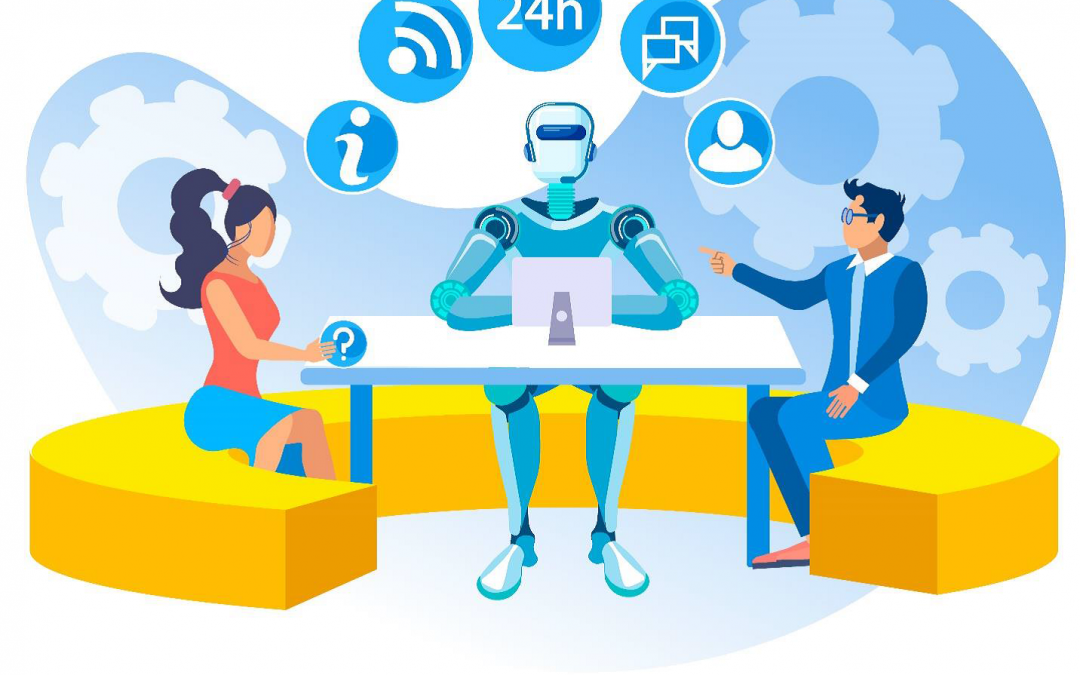A digital workforce could be defined as a collection of bots working side by side with humans to achieve organizational goals. These bots will read spreadsheets, scrape websites, collate content from social media, get information from your MIS systems, restart servers, call your dog walker and even order a pizza!
In the past few years, the advancement in AI/ML technologies, chatbots and desktop automation (RPA – Robotic Process Automation) has created opportunities to deploy a digital workforce to perform monotonous, repetitive or rule-based tasks throughout the organization. Bots are now trained to detect patterns and behaviours and react accordingly to human interactions as well as systematic activities.
Many organizations around the world are experimenting with the effectiveness of using bots and automation to gain a competitive advantage. This could be either by way of improving quality, create standardizations or by just increasing the throughput. That said, the challenge for most small and medium-size business is they often do not have a roadmap to transition from a PoC exercise to digitization of their workforce. They tend to validate a tool/technology instead of analyzing their internal preparedness and capabilities.
Here are a couple points that can help guide such organizations take some incremental steps.
A PoC should focus more on the use cases than the tools and technologies
When you invest in a PoC, focus first on processes that have time, cost or resource constraint rather than focusing on which RPA tool or chatbot technology to use. Select a process that will provide a tangible benefit after digitization and is a good representation of complexity that exists in your processes.
Avoid selecting a process for PoC because it is simple and some vendor is willing to automate it for free as PoC. This will essentially validate the technology used not whether your organizational goals could be achieved.
Create a cost-benefit analysis of each use case and define the goals you plan to achieve after digitization of the workforce. Is it to do more with less? Is it improving turnaround time? Or is it risk mitigation? A tool or technology selection should not be the first thing you do.
Take an example of a PoC that uses a bot that reads data from various documents and websites, validates their content and in the end posts the data into your ERP/CRM system. This could be a good use case to pick up for the PoC if you currently have a dozen or so people doing this job every day and the concern you are trying to address is the turnaround time, quality and ever-increasing volume of documents.
Now on the surface, this looks like a no brainer. Deploy an array of bots and do more with less and have your ERP/CRM system up to date in almost real-time.
But then here are some things to consider while adding digital workforce during your decision-making process:
- What are your labour costs for those resources or more specifically what is your total cost of ownership (TCO) for the above-mentioned process? A TCO should also consider time lost or any opportunity costs
- Do you face penalties, maybe due to regulatory needs, if the data is not processed in a given time frame?
- Is the improvement in turnaround time really going to matter? It might be statically significant but is it important for your organizational goals?
- The licensing costs for most RPA bots, chatbots are sizeable. Does the cost justify digitization? How long would it take you to break even? Plus note that these costs could be recurring and should be considered as part of your TCO after digitization
- When business rules change, when regulations change, when competitive forces change would it be easier and cheaper to train a human resource than a bot? How significant is the impact?
- You should always plan (cost and training) for human backups to all your bots! Maybe not one-to-one, but at least a few SME’s who can take over when bots become obsolete or need an upgrade to the process. The bot may work 24/7 but at an average speed less than or equal to its human friend.
Ask these type of questions for every process you think that needs automation or will benefit for a digital workforce. Develop a heat map/cost-benefit matrix that shows the TCO of digitization per process and goals/impact with the timeline.
Remember to follow the 80/20 rule while adding Digital Workforce
Pick processes or just parts/variations of a process that handles 80% of the scenarios. It’s management by Exception! The Bot should assign/divert the situations that are complex/rare to humans. This is where most of the human judgement is required and now that bots are addressing the 80% we can work on making rest of the process better.
In conclusion, the digital workforce, or Bots are here and they are quickly becoming a great resource to tackle the time, cost and resource constraints of an organization. Ensure that you evaluate the processes before your start a PoC, understand the TCO before and after digitization and keep an eye on future system designs to ensure you have an eco-system where automation/bots can thrive.
